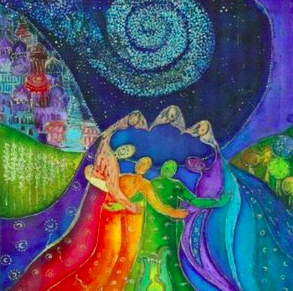Could We All Be “Daughters” of Wisdom?
I think you are going to love this. One of our members presented it at our annual Southeast Pennsylvania chapter of WOC full day retreat last week. It is a quote from the book, Holy Rascals, by Rabbi Rami Shapiro. (The book’s title alone enthralls me as does being able to quote such a wise Rabbi on the day before Yom Kippur!)
“In the summer of 2001, I visited the Daughters of Wisdom. I asked Sisters Rosemarie and Jo Ann to show me their chapel. The room was simple, with a beautiful altar, but over the altar, where I had expected to see a crucifix, was a life-sized statue of Mary, her feet on the moon, her hands folded in a Namaste gesture, seeing to float out over the congregation. Looking at the Mother, I felt an unshakable presence of compassion and peace.
‘Where is Jesus?’ I asked. Sister Rosemarie opened a small drawer in a wooden chest and pulled out a brass crucifix. ‘We only bring him out when Father comes to say Mass’.”
I believe the sisters had no problem with Jesus (although how they felt about “Father”, well, we can imagine). I think it was actually the crucifix itself, looming over an altar at which congregants gather to pray, to listen to scripture and each other, to reflect, to receive communion, and, as the Rabbi said, compassion and peace. That was the real problem.

We do not always need to be reminded of violence, suffering, and death. We can just look around us. In our Holy places, we need the feminine – the richness of all genders – not just masculine, to nourish and sustain us, to give us the strength and courage to cope with the violence and suffering and death around us.
We do need a new inclusion, but not only in presiders and celebrants and participants. We also need new forms, new creativity, new emphases in our sacred symbols and rituals, in our worship itself.
We are the multi-gendered children of Wisdom. Let’s begin designing, with all humility and reverence, what that means.

One Response
The complementarity of man and woman is enabled by their consubstantiality. The communion of man and woman, different but consubstantial in one and the same human nature, is an image of trinitarian communion.
Some Summary Points for Meditation
http://pelicanweb.org/CCC.TOB.html#SUMMARY